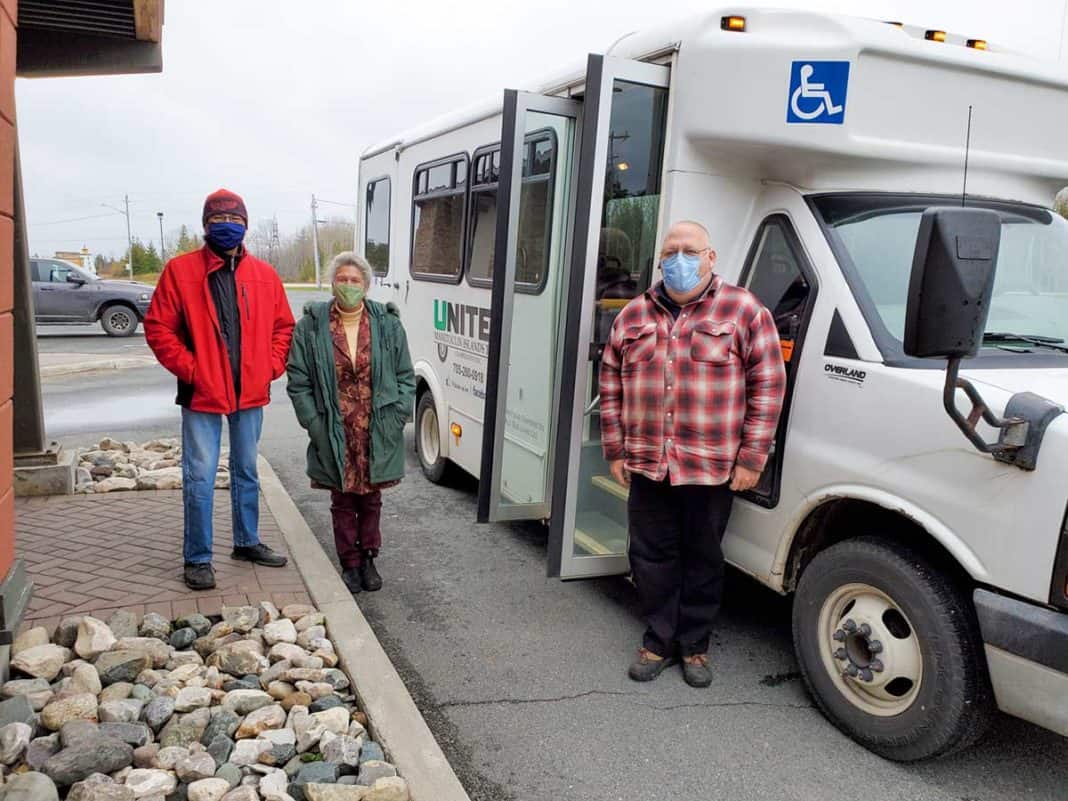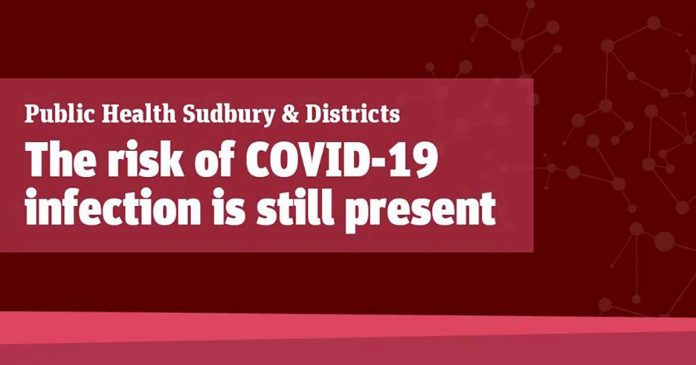Island bus on the go
MANITOULIN – United Manitoulin Islands Transit (UMIT) service will be free on its weekday route between Mindemoya, Little Current and Manitowaning until January 6, 2021, and the service has further plans to expand its service through digital partnerships and community outreach.
“Our feedback so far has been really positive. We’re quite delighted to see people using the system,” said Joahnna Berti, executive director of UMIT. “Ridership is increasing as people are trusting us more and that’s great.”
UMIT is a transit co-operative that is owned by communities and stakeholders. Individuals and organizations can buy memberships in the service; businesses especially may find it beneficial because it will enable more people to reach their storefronts or access their services.
Launching a transit service in the midst of a pandemic has added some challenges, but the new service with its still-low ridership numbers means there is ample space on board to let first-time riders feel more comfortable.
At this time, the M’Chigeeng to Little Current leg of the route is proving the most popular, though ridership is growing on the eastern segment between Manitowaning and Little Current.
UMIT uses roughly 70 litres of fuel per weekday on its two trips, equivalent of 167.4 kg of carbon dioxide per operating day. The more passengers that use the service, the lower the per-passenger carbon footprint will be.
This reporter experienced the service on Thursday, October 29. One passenger travelled from Manitowaning to Little Current and another from Aundeck Omni Kaning to Kenjgewin Teg in M’Chigeeng. There are an average of three travellers per day.
“I’ve been catching a ride to school every Tuesday-Wednesday-Thursday and it’s been helping a lot,” said passenger Bradley Paibomsai, who had two weeks left of his trade fundamentals course. Without the bus, he said he would have to hitchhike and have a difficult time making it to class on schedule.
“I’d probably buy a membership in the service, for sure,” he said. “Chi-miigwetch for the people who put this together, a big thank you.”

Ms. Berti said the schedule has been working out well so far based on rider feedback. Driver Doug Mervyn follows it closely to ensure no passengers get left behind.
Upcoming challenges for the service include fundraising enough to get revenues from the Ontario Gas Tax Fund. Ms. Berti explained that the Ontario Ministry of Transportation (MTO)’s relationship with UMIT is through the Municipality of Central Manitoulin.
“The province has a (Gas Tax funding) formula which includes your ridership, your municipal contributions, your fundraising and your sponsorship. They (MTO) will not give you a grant larger than your municipal contributions and also puts a significant weight on ridership,” she explained.
This means there is no way to estimate how much UMIT may get from Ontario’s Gas Tax Fund, which comes from taxes on gasoline purchases in the province. Ms. Berti said two cents per litre of fuel goes toward public transit.
The 156-kilometre route mainly along Highways 540, 551 and 6 has its limitations. Because of the wide area the transit company serves, it cannot stray too far from the highways.
UMIT is hoping to launch a car connecter service to address this challenge. It would link people from other communities, especially Wiikwemkoong, to the bus route so they can access the communities the main bus serves.
UMIT president Guy Dumas said he was hoping to involve elders as drivers for the car connection service.
The next main component to UMIT’s expansion will be a partnership, currently in development, with Montreal-based Blaise Transportation. The startup has created a software platform that uses artificial intelligence to help transit agencies run on-demand bus services.
“They found us, we didn’t find them, so UMIT is getting out there and our allies are stepping up to do business with us,” said Mr. Dumas. “Once we get it all fine-tuned, our on-demand services will enhance and complement our fixed route.”
Blaise Transportation will gather customer data such as where people tend to travel and when. It will help UMIT tailor its services to address as many needs as possible.
Representatives from the startup will be at UMIT’s upcoming annual general meeting and barbecue this Saturday, November 7, from 1 to 4 pm at Kenjgewin Teg, where the UMIT team hopes to meet people, gain new members and answer questions about the service.
“When we began this whole transit project, it was based on iterations and trying things out until we knew what would take us forward,” said Mr. Dumas.
He said UMIT’s vision is to create a world-class transit system. The singular fixed weekday route currently in operation, until the on-demand services to gather farther riders come online, is rooted in traditional transit models that are failing. Mr. Dumas has sought to define his service in a different way.
“We’re not in the transit business. We’re in the flourishing Manitoulin business and we’re using world-class transit as our way to achieve that vision. Making a strong Manitoulin our goal gives us opportunities to consider other ideas, too,” he said.
Groups have tried to launch Island transit several times, including in 1922, the 1950s and the 1970s, said Mr. Dumas. Those all failed because of their traditional models and reliance on grant funding, something he said he doesn’t want his service to become.
Part of the diversification to create a flourishing Manitoulin includes Mr. Dumas’ desire to create a blockchain-based tokenization system that would provide incentives for both transit users and Island businesses.
He and Ms. Berti said they had been studying other transportation systems worldwide that operate using blockchain and may have found a suitable match in Switzerland that they can study and adapt for Manitoulin.





